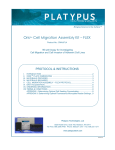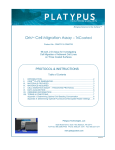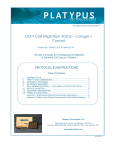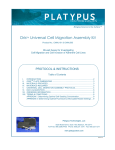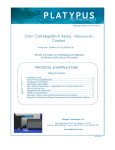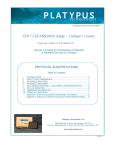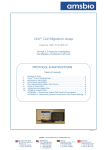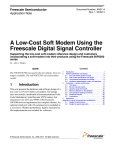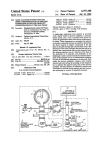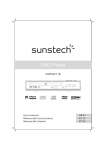Download OrisTM 3D Embedded Invasion Assay
Transcript
Bringing Science to the SurfaceTM OrisTM 3D Embedded Invasion Assay Product No.: EIAST 3D Assay for Investigating Embedded Cell Movement through Collagen I PROTOCOL & INSTRUCTIONS I. MATERIALS PROVIDED .......................................................................................... 2 II. MATERIALS REQUIRED .......................................................................................... 2 III. PRECAUTIONS AND RECOMMENDATIONS ...................................................... 3 IV. Oris™ 3D EMBEDDED INVASION ASSAY PROTOCOL .................................... 4 V. DATA ACQUISITION ................................................................................................. 7 VI. Oris™ PLATE DIMENSIONS .................................................................................... 8 VII. ORDERING INFORMATION..................................................................................... 8 VIII. TERMS & CONDITIONS ........................................................................................... 9 APPENDIX I: Determining Optimal Cell Seeding Concentration ................................ 10 APPENDIX II: Fluorescent Labeling Live Cell Options ................................................ 10 APPENDIX III: Fluorescent Labeling Fixed Cell Options ............................................. 11 Platypus Technologies, LLC 5520 Nobel Drive, Suite 100, Madison, WI 53711 Toll Free: 866.3296.4455 Phone: 608.237.1270 Fax: 608.237.1271 www.platypustech.com SP0232.01 Oris™ 3D Embedded Invasion Assay Important: Read Instructions Before Performing any OrisTM Assay. I. MATERIALS PROVIDED Product No.: EIAST Component Quantity Oris™ -compatible 96-well Collagen I Coated Plate Storage 1 Refrigerate (4°C) 2 x 24 Refrigerate (4°C) Oris™ Detection Mask 1 Room Temperature Oris™ Stopper Tool 1 Room Temperature 1 x 2 mL Refrigerate (4°C) Oris™ Cell Seeding Stoppers Oris™ Collagen I (Rat tail) * *Oris™ Collagen I (Rat tail) must be stored at 4°C for use within 6 months of receipt. Do not freeze. II. MATERIALS REQUIRED Cells 7.5% Sodium Bicarbonate Cell Culture Growth Medium Sterile PBS Serum-Free Cell Culture Medium Sterile Pipette Tips/Pipette or Multi-Channel Pipette Trypsin or Cell Scraper Inverted Microscope (optional) Fluorescence Microplate Reader (optional) Cell Culture Labeling Medium (phenol red-free/serum-free) Cell Labeling Fluorescent Agent (e.g., Calcein AM) - required if performing staining. Oris™ is a trademark of Platypus Technologies, LLC. Platypus Technologies, LLC SP0232.01 5520 Nobel Drive, Suite 100 Madison WI 53711 USA www.platypustech.com Toll Free: 866.296.4455 Phone: 608.237.1270 Fax: 608.237.1271 pg. 2 III. PRECAUTIONS AND RECOMMENDATIONS For Research Use Only. Not for use in diagnostic procedures. Handling and Use of the Oris™ Collagen I (Rat tail): Be sure to keep Oris™ Collagen I (Rat tail) on ice while being used. A suggested concentration for the Oris™ Collagen I Matrix is 3 mg/mL. If you prefer to use a different concentration of the Collagen I Matrix solution for your particular cell line, be sure to adjust the volumes of the other associated reagents in proportion to the adjustments made to the volume of the collagen. Recommendations for Preparation of Reference Wells: Establishing a time zero (t=0) reference can be accomplished by any of several methods: real-time analysis, treating reference wells with a migration inhibitor, or utilizing the stopper as a physical barrier to prevent cell movement into the detection zone. Real-time analysis using microplate reader: treat the cells with a live fluorescent stain at the start of the assay. Attach the Oris™ Detection Mask to the bottom of the plate (see Section IV, Step 5). Quantify fluorescence using a microplate reader. This data is the pre-invasion reference value. Real-time analysis using microscopy (with imaging capabilities): images collected at the start of the experiment can be used as the t=0 reference to be analyzed compared with subsequent images. Inhibitor treatment: treat control wells with a concentration of drug that fully inhibits cellular movement. Choice of drug and concentration will be cell line dependent. To ensure the correct drug concentration, you may need to test a range of drug concentrations in a separate experiment. Oris™ Cell Seeding Stoppers as barrier (NOTE: Stoppers come in strips of n=4): Set up the assay as normal following the protocol in Section IV. For the t=0 reference wells, skip steps 12-14. Continue with the rest of the experiment as normal. The stoppers can remain in place as a t=0 reference until the assay is complete. Upon completion, the stoppers may then be removed to allow for endpoint fixation and labeling. Recommendations for 10X PBS Buffer: When 10X PBS is refrigerated, sedimentation may occur due to the high salt concentration. If sediment forms, warm the PBS in a water bath (37°C) to completely dissolve any sediment prior to use. Platypus Technologies, LLC SP0232.01 5520 Nobel Drive, Suite 100 Madison WI 53711 USA www.platypustech.com Toll Free: 866.296.4455 Phone: 608.237.1270 Fax: 608.237.1271 pg. 3 IV. Oris™ 3D EMBEDDED INVASION ASSAY PROTOCOL The following steps should be performed in a biological hood using aseptic technique to prevent contamination. 1. If desired, cells can be starved by incubating for 18 - 24 hours in serum-free medium prior to assay. Alternatively, 0.5% fetal bovine serum may be used if needed. 2. Remove the Oris™ -compatible 96-well Collagen I Coated Plate from refrigeration and allow to equilibrate to room temperature for one hour. 3. Populate the 96-well plate with Oris™ Cell Seeding Stoppers: A) Vertically position the tip ends of two, 4-stopper strips into one full column of 8 wells at a time (Figure 1A). Gently press down on the strip backbone to partially insert the stopper halfway into the well (Figure 1B). When both stopper strips have been partially inserted in one column, ensure that the position of the stoppers is vertical with respect to the well wall, making any necessary adjustments (Figure 1C). Using the Oris™ Stopper Tool, firmly press down on the strip backbone to fully insert the stoppers into each well (Figure 1D and 1E). Repeat for all remaining stoppers. NOTE: It is extremely important to ensure that the stopper are inserted perpendicular to the well bottom and are fully engaged with the well bottom. If you require the stoppers to be more consistently located, the pre-populated Oris™ 3D Embedded Invasion Assay Kit (Cat. No. EIA1) is recommended. 4. B) D) C) E) Figure 1. Stopper Insertion Process. A) Placement of Stoppers into Wells, B) Close-up of Stoppers Partially Inserted into Wells, C) Proper Placement of Stoppers, D) Pressing of Stoppers into Wells, and E) Fully Inserted Stoppers Visually inspect the underside of the populated 96-well plate to ensure that the Oris™ Cell Seeding Stoppers are firmly sealed against the bottom of the plate. To inspect the stoppers, turn the plate over and examine the stoppers for sealing (see Figure 2). If incomplete sealing is observed, return the plate to the upright position and use a sterile instrument to gently push the stopper back into the well until sealing is observed. A B C NOTE: The sealing of the stoppers can be most easily observed if the plate is tipped at an angle and viewed under indirect light to reveal the “bullseye” pattern at the bottom of each well (Figure 2). 5. If microplate reader data will be collected, apply the Oris™ Detection Mask to the bottom of the 96-well plate. The Detection Mask is not necessary if collecting imaging data. First Time Users: In order to prevent splashing of well contents, familiarize yourself with the attachment and removal of the Detection Mask before any liquids are placed into the wells: Figure 2. Stoppers that are: A) Partially Sealed B) Unsealed C) Completely Sealed Aperture Orientation A-1 Corner Chamfer Attachment Lugs Orient the chamfered corners of the mask with those of the 96-well plate, ensuring that the A1 corner of the mask is aligned with the A1 well of the plate (Figure 3). Align the holes in the attachment lugs with the bosses on the bottom of the plate. Gently press the mask until it is flush with the bottom of the 96-well plate. NOTE: You may wash the mask with ethanol as the mask is not sterile. The mask may be applied at any point during the assay. For real-time assays, it is most convenient to apply the mask at the beginning of the assay before any liquids are placed in the well. For endpoint assays, using fixed and stained cells, it is most convenient to apply the mask just before reading assay results. Platypus Technologies, LLC SP0232.01 5520 Nobel Drive, Suite 100 Madison WI 53711 USA www.platypustech.com Figure 3. Features of Detection Mask Toll Free: 866.296.4455 Phone: 608.237.1270 Fax: 608.237.1271 pg. 4 6. If performing real-time analysis of cell invasion, pre-label cells with a fluorescent stain at this time. Refer to Section V and Appendix II for further suggestions on data acquisition and fluorescent labeling of live cells. 7. Collect cells and prepare a suspension in cell culture medium that is 125 times greater in cell density than the target seeding concentration. For example; for a final concentration of 30,000 cells/well, the suspension concentration should be 3.75 x 106 cells/mL. First Time Users: The optimum seeding density of cells should be determined for each cell type. Please refer to Appendix I for a discussion of this process. Figure 4. Media is added with Single or Multi-Channel Pipette IMPORTANT: For recommendations on designating ‘reference’ wells, please refer to Section III: Precautions and Recommendations. 8. Prepare a 5.0 mL of the Collagen I Matrix solution with embedded cells using the following components: 10X PBS (sterile), [to achieve a 1X PBS final concentration] 7.5% Sodium Bicarbonate (sterile), [0.0125 mL / mL of Oris™ Collagen I (Rat tail) stock reagent] Deionized water (sterile) Oris™ Collagen I (Rat tail) Cell suspension, [20% of total solution volume] IMPORTANT: Prior to/during use, keep the Oris™ Collagen I (Rat tail) and the resulting Collagen I Matrix solution on ice. In addition, the use of chilled pipette tips/reservoirs might be beneficial. The following are volumes for preparing 5.0 mL of 3.0 mg/mL Collagen I Matrix solution: 0.5 mL 10X PBS buffer 0.0375 mL 7.5% sodium bicarbonate 0.4625 mL deionized water 3 mL Oris™ Collagen I (Rat tail) 1 mL cell suspension 5.0 mL total volume On ice, combine the 10X PBS, 7.5% Sodium Bicarbonate, and deionized water. Next add the Oris™ Collagen I (Rat tail). Lastly, add the prepared cell suspension. Gently pipette up and down to completely mix the Collagen I Matrix solution with the cells. NOTE: Supplements, such as growth factors, may be mixed with the Collagen I Matrix solution. 9. Pipette a total 40 µL of the Collagen I Matrix into each test well through the side ports of the Oris™ Cell Seeding Stopper. It is recommended to pipette 20 µL down each side port to ensure even collagen distribution throughout the well. NOTE: Do not disturb the Oris™ Cell Seeding Stopper or the Collagen I plate surface coating when introducing the pipette tip into the well. Keep the pipette tips vertical while dispensing to avoid the Collagen I Matrix solution getting caught on the well wall instead of the well bottom. An elongated tip may be useful. 10. Incubate the plate containing the Oris™ Cell Seeding Stoppers and Collagen I Matrix in a humidified chamber (37°C, 5% CO2) for 1 hour to promote collagen polymerization. A) B) D) C) E) 11. Remove plate from incubator. 12. Using the Oris™ Stopper Tool, remove stoppers (see Figure 5). Leave any stoppers in place that have been designated as pre-invasion t=0 control until completion of the assay. Secure the 96-well plate by holding it firmly against the deck of your work space. Slide the tines of the Oris™ Stopper Tool under the backbone of the stopper strip, keeping the underside of the Oris™ Stopper Tool flush with the top surface of the plate. Lift the Oris™ Stopper Tool vertically and remove stoppers gently. Platypus Technologies, LLC SP0232.01 5520 Nobel Drive, Suite 100 Madison WI 53711 USA www.platypustech.com Figure 5. Removal of Stoppers. Panels A, B, and C) Position the Tines of the Stopper Tool between the Stopper Tips, D) Lift Vertically, and E) Do NOT Pry Stoppers Toll Free: 866.296.4455 Phone: 608.237.1270 Fax: 608.237.1271 pg. 5 Do not use the Oris™ Stopper Tool as a lever to pry the stoppers from the well (see Figure 5E), as doing so may cause displacement of the collagen and may distort the detection zone area. NOTE: You may wash the Oris™ Stopper Tool with 70% ethanol as the Stopper Tool is not sterile. 13. Prepare 1.5 mL of the Oris™ Collagen I Matrix solution in a similar way as Step 8, to fill the newly created detection zone. (This preparation process can be started prior to step 9 immediately before the plate is removed from incubation). The following are volumes for preparing 1.5 mL of 3.0 mg/mL Collagen I Matrix solution: 0.150 mL 10X PBS buffer 0.01125 mL 7.5% sodium bicarbonate 0.13875 mL deionized water 0.9 mL Oris™ Collagen I (Rat tail) 0.3 mL media 1.5 mL total volume NOTE: Supplements, such as growth factors, may be mixed with the Collagen I Matrix solution. 14. Pipette 10 µL of the Collagen I Matrix solution into the detection zone in the center of each well. Try to get the Collagen I Matrix solution all the way to the bottom of the well of the detection zone so that the material fills the cylindrical detection zone completely from bottom to top. NOTE: Due to the clarity of the collagen, it may be difficult to see the detection zone. The Oris™ Cell Seeding Stoppers position the detection zone in the center of every well. It may be helpful to use a slender pipette tip when pipetting the Collagen I Matrix solution to avoid damaging to the outer collagen ring. 15. Incubate plate in a humidified chamber (37°C, 5% CO2) for 1 hour to permit polymerization of the Collagen I Matrix in the detection zone. 16. Remove plate from the incubator. 17. Add 100 µL of cell culture growth medium on top of the 3D Embedded Collagen I Matrix. Optional: Invasion inhibitors or stimulants may be added to the medium. IMPORTANT: Use caution when adding media to not disturb Collagen I Matrix solution. 18. Incubate plate in a humidified chamber (37°C, 5% CO2) to permit cell movement (the period of incubation is cell line dependent). Monitor the cells periodically to check for extent of migration. Refresh media or supplements, every 48 - 72 hours, as needed, for the duration of the experiment. 19. If performing an endpoint analysis of cell invasion, fix and stain cells with a fluorescent stain after sufficient invasion has occurred. Refer to Section V and Appendices II & III for further information on data acquisition and fluorescence staining technique. NOTE: Oris™ Cell Seeding Stoppers are for single use only. Platypus Technologies, LLC SP0232.01 5520 Nobel Drive, Suite 100 Madison WI 53711 USA www.platypustech.com Toll Free: 866.296.4455 Phone: 608.237.1270 Fax: 608.237.1271 pg. 6 DATA ACQUISITION The readout of the Oris™ 3D Embedded Invasion Assay can be conducted at any time throughout, as well as, at the end of the assay. You may use any commercially available stain or labeling technique. The readout can be performed using a microscope, a microplate reader, or a High Content Screening or High Content Imaging instrument. Microscope Analysis Visual cell counting or image analysis software, such as NIH ImageJ freeware, can be used. Microscopic observations are possible using phase contrast or fluorescence microscopy. No need to attach the Oris™ Detection Mask to the Oris™ microplate. To set up reference controls, refer to Section III: Precautions and Recommendations. Microplate Reader Analysis Attach the Oris™ Detection Mask to the bottom of the Oris™ microplate (see Section IV, Step 5). Optimal settings will vary according to the microplate reader make and model. Consult Appendix II and the equipment user manual for your particular instrument. The microplate reader MUST be set to read from the bottom of the plate. To set up reference controls, refer to Section III: Precautions and Recommendations. Sample Data Obtained via Microscopy are shown in Figure 6. Oris™ Collagen I Matrix solution at 3 mg/mL with 30,000 HT-1080 cells/well (i.e. 40 µL with 3.75x106 cells/mL) was added to the plate and incubated (37°C/5%CO2) for 1 hour. The stoppers were removed from the wells and the detection zone was filled with 3 mg/mL Collagen I Matrix. Collagen in the detection zone was allowed to polymerize for 1 hour. Complete medium (10% FBS) with either GM6001 (MMP inhibitor) or DMSO (Control) was added on top of the Collagen I Matrix. The plate was then incubated for seven days to permit cell invasion. Cells were labeled with TRITC-phalloidin (F-actin) and DAPI (nuclei) fluorescent stains. Images were captured using a Zeiss Axio Observer.Z1 inverted microscope. Cells in the detection zone were quantified using ImageJ software (NIH). The images below illustrate representative data from full drug inhibition with 250 µM GM6001 (image 1a) and post-invasion, 0.25% DMSO (image 1b) wells. The histogram depicts the average cell count (mean +/- SD of seven wells) for number of cells invaded into the detection zones for each condition. HT-1080 Cells in OrisTM 3D Embedded Invasion Assay 1a) 1b) 4000 Number of Cells V. 3000 2000 1000 0 250 µM GM6001 0.25% DMSO 250 µM GM6001 0.25% DMSO Figure 6. Cell invasion data obtained via microscopy analysis. Representative images were taken at 5X magnification with the DAPI filter set. Platypus Technologies, LLC SP0232.01 5520 Nobel Drive, Suite 100 Madison WI 53711 USA www.platypustech.com Toll Free: 866.296.4455 Phone: 608.237.1270 Fax: 608.237.1271 pg. 7 VI. Oris™ PLATE DIMENSIONS Diameter of Well – Bottom 6.3 mm Diameter of Well – Top 6.45 mm Diameter of Stopper Space (Detection Zone) 2 mm Suggested Media Volume per Well (populated with Stoppers) 100 µL Effective Area of Outer Annular Region (seeding region) per Well 28.03 mm2 Effective Area of Central Detection Zone per Well 3.14 mm2 Plate Height 14.95 mm Plate Height with Lid (with OrisTM Cell Seeding Stoppers) 17.9 mm Offset of Wells (A-1 location, X) 14.32 mm Offset of Wells (A-1 location, Y) 11.25 mm Distance between Wells VII. 9 mm (on center) Well Depth 12.1 mm Thickness of Well Bottom 0.25 mm Well Coating Material Collagen I, rat-tail Storage Conditions Refrigerate (4°C) ORDERING INFORMATION Product Name Oris™ 3D Embedded Invasion Assays Oris™ Cell Migration Assays Oris™ Cell Migration Assembly Kits Oris™ Pro Cell Migration Assays Oris™ Pro 384 Cell Migration Assays Oris™ Pro Invasion Assays Coating Collagen I Coated Size Detection Zone Format 1-pack (EIA1) 3-pack (EIA3) Oris™ Cell Seeding Stoppers (pre-populated) Starter pack (EIAST) Oris™ Cell Seeding Stoppers (not pre-populated) Tissue Culture Treated 1-pack (CMA1.101) 5-pack (CMA5.101) Collagen I Coated 1-pack (CMACC1.101) 5-pack (CMACC5.101) Fibronectin Coated 1-pack (CMAFN1.101) 5-pack (CMAFN5.101) TriCoated (TC, Col, HFn) 1-pack (CMATR1.101) 5-pack (CMATR5.101) Universal (Tissue Culture Treated) 1-pack (CMAU101) 5-pack (CMAU505) FLEX (Tissue Culture Treated) 4-pack (CMAUFL4) Tissue Culture Treated 1-pack (PROCMA1) 5-pack (PROCMA5) Collagen I Coated 1-pack (PROCMACC1) 5-pack (PROCMACC5) Tissue Culture Treated 1-pack (PRO384CMA1) 5-pack (PRO384CMA5) Collagen I Coated Collagen I Coated 1-pack (PRO384CMACC1) 5-pack (PRO384CMACC5) 1-pack (PROIA1) 3-pack (PROIA3) 1-pack (PROIAPLUS1) 3-pack (PROIAPLUS3) Oris™ Cell Seeding Stoppers (pre-populated) Oris™ Cell Seeding Stoppers (not pre-populated) Biocompatible Gel Biocompatible Gel Biocompatible Gel For a complete list of assays, visit Platypus Technologies at www.platypustech.com. For technical assistance, contact Technical Support at (866) 296-4455 or [email protected]. Platypus Technologies, LLC SP0232.01 5520 Nobel Drive, Suite 100 Madison WI 53711 USA www.platypustech.com Toll Free: 866.296.4455 Phone: 608.237.1270 Fax: 608.237.1271 pg. 8 VIII. TERMS & CONDITIONS Certain uses of these products may be covered by [U.S. Pat. No. 7,018,838], No. 7,842,499, No. 8,268,614 and their corresponding international applications; and US and international Appl. Nos. 10/579,118, and 12/195,001 issued to or applied for by PLATYPUS. Certain applications of PLATYPUS products may require licenses from other parties. Determining the existence and scope of such third party intellectual property is the responsibility of the PURCHASER. Purchase of the product provides the PURCHASER with a limited non-transferable license under any PLATYPUS patents or patent applications to use the product for internal research unless there is a written limitation to this license in the product literature. PURCHASER is responsible for carefully reviewing the product literature and respecting any limitations to this license, e.g. limitations for commercial use or research by for-profit institutions. These products may not be resold, modified for resale, used to manufacture commercial products, or used to develop commercial products without the express written approval of PLATYPUS. These products are intended for research or laboratory use only and are not to be used for any other purposes, including, but not limited to, unauthorized commercial purposes, in vitro diagnostic purposes, ex vivo or in vivo therapeutic purposes, investigational use, in foods, drugs, devices or cosmetics of any kind, or for consumption by or use in connection with or administration or application to humans or animals. PLATYPUS warrants that its products shall conform substantially to the description of such goods as provided in product catalogues and literature accompanying the goods until their respective expiration dates or, if no expiration date is provided, for 6 months from the date of receipt of such goods. PLATYPUS will replace, free of charge, any product that does not conform to the specifications. This warranty limits PLATYPUS's liability only to the replacement of the nonconforming product. THIS WARRANTY IS EXCLUSIVE AND PLATYPUS MAKES NO OTHER WARRANTY, EXPRESS OR IMPLIED, INCLUDING WITHOUT LIMITATION, ANY IMPLIED WARRANTY OF MERCHANTABILITY OR FITNESS FOR A PARTICULAR PURPOSE. The stated express warranties, and the remedy provided for breach thereof, are in lieu of all other liability or obligations of PLATYPUS for any damages whatsoever arising out of or in connection with the delivery, use, misuse, performance, or the inability to use any of its products. IN NO EVENT SHALL PLATYPUS BE LIABLE UNDER ANY LEGAL THEORY (INCLUDING BUT NOT LIMITED TO CONTRACT, NEGLIGENCE, STRICT LIABILITY IN TORT, OR WARRANTY OF ANY KIND) FOR ANY INDIRECT, SPECIAL, INCIDENTAL, CONSEQUENTIAL, OR EXEMPLARY DAMAGES (INCLUDING BUT NOT LIMITED TO LOST PROFITS) EVEN IF PLATYPUS HAD NOTICE OF THE POSSIBILITY OF SUCH DAMAGES. Without limiting the effect of the preceding sentence, PLATYPUS's maximum liability, if any, shall not exceed the purchase price paid by PURCHASER for the product. This warranty shall not be effective if PLATYPUS determines, in its sole discretion that PURCHASER has altered or misused the goods or has failed to use or store them in accordance with instructions furnished by PLATYPUS. PLATYPUS’s sole and exclusive liability and PURCHASER’s exclusive remedy with respect to goods proved to PLATYPUS’s satisfaction (applying analytical methods reasonably selected by PLATYPUS) to be defective or nonconforming shall be the replacement of such goods free of charge, upon the return of such goods in accordance with our instructions, although at its discretion, PLATYPUS may provide a credit or refund. If PLATYPUS manufactures custom goods for PURCHASER based on instructions, specifications, or other directions provided by PURCHASER, PLATYPUS shall not be liable for the lack of sufficiency, fitness for purpose or quality of the goods to the extent attributable to such instructions, specifications, or other directions. PLATYPUS shall not be liable for any loss, damage or penalty as a result of any delay in or failure to manufacture, deliver or otherwise perform hereunder due to any cause beyond PLATYPUS’s reasonable control. PLATYPUS shall not be liable for injury or damages resulting from the use or misuse of any of its products. Platypus Technologies, LLC SP0232.01 5520 Nobel Drive, Suite 100 Madison WI 53711 USA www.platypustech.com Toll Free: 866.296.4455 Phone: 608.237.1270 Fax: 608.237.1271 pg. 9 APPENDIX I: Determining Optimal Cell Seeding Concentration Optimal cell seeding density can vary depending on the properties of each cell line being tested. A suggested final concentration range is between 5.0 x 105 – 9.0 x 105 cell/mL (i.e. 20,000 – 36,000 cell/well). It may be helpful to evaluate various cell densities. The following is an example of an experimental set up to determine optimal seeding concentration. a) b) c) d) Prepare a log-phase culture of the cell line to be tested. Collect cells and determine the total number of cells present. Pellet cells by centrifugation. Prepare the cell suspensions in a similar manner as described in Section IV, Step 7. Continue with the assay in accordance with the remaining steps of the protocol in Section IV. Dispense the collagen/cell suspension into the test wells of the 96-well plate to result in the following plate layout: Column Cells / well Number of wells e) f) g) h) i) 1 80,000 8 2 40,000 8 3 20,000 8 Incubate the plate in a humidified chamber (37°C, 5% CO2) for 1 hour to polymerize collagen/cell solution. Remove the Oris™ Cell Seeding Stoppers from each well (see Figure 5). Add the Collagen I Matrix solution to fill the detection zone column and incubate for 1 hour to allow for collagen polymerization. Add 100 µL of culture medium to each well and place the plate back in the incubator. Monitor periodically to assess cell movement. Upon completion of the assay, use a microscope to examine each well to determine the optimal cell seeding concentration for your specific cell type. APPENDIX II: Fluorescent Labeling Live Cell Options It is important to label cells using a fluorescent reagent that uniformly stains cells. Please consult the manufacturer of your fluorescent stain for specific considerations. NOTE: Use caution when adding/removing solutions so that the Collagen I Matrix is not dislodged from the bottom/sides of the well. The following is an example Fluorescent Staining Protocol to label live cells with Calcein AM: a) To stain one fully-seeded 96-well plate, combine 5 μL of Calcein AM (1 mg/mL in anhydrous DMSO) with 10 mL of phenol red-free and serum-free medium or 1x PBS (containing both Ca++ and Mg++). Protect diluted Calcein AM solution from light until ready to use in step d. b) Carefully remove the culture medium from wells with a pipette. c) Wash wells with 100 μL of PBS (containing both Ca++ and Mg++). d) Add 100 μL of diluted Calcein AM solution to each well. e) Incubate plate at 37°C for 30 - 60 minutes. f) Attach mask and read promptly with microplate reader using appropriate filter set and sensitivity/gain settings. i. Using the bottom probe of a fluorescence microplate reader, obtain the fluorescence reading from each well. To achieve the optimal dynamic range, adjust the instrument settings to result in the greatest difference in fluorescence signal between pre-invasion and post-invasion wells. Refer to the instrument manual for your microplate reader for guidance on instrument settings. g) Additionally, the plate may be analyzed by microscopy using fluorescent filters with excitation and emission wavelengths of 495/515 nm, respectively. Platypus Technologies, LLC SP0232.01 5520 Nobel Drive, Suite 100 Madison WI 53711 USA www.platypustech.com Toll Free: 866.296.4455 Phone: 608.237.1270 Fax: 608.237.1271 pg. 10 APPENDIX III: Fluorescent Labeling Fixed Cell Options This procedure is intended to assist in obtaining data from the Oris™ 3D Embedded Invasion Assay using various fluorescent labels. It is important to use a fluorescent reagent that uniformly stains cells. Please consult the manufacturer of your fluorescent stain for specific considerations. NOTE: Use caution when adding/removing solutions so that the Collagen I Matrix is not dislodged from the bottom/sides of the well. The following is an example protocol to label fixed cells with TRITC-phalloidin (F-actin) and DAPI (nuclei) fluorescent stains: a) b) c) d) e) f) g) h) i) j) k) To fix one fully-seeded 96-well plate, prepare 10 mL of fixative solution to have a final well concentration of 0.25% glutaraldehyde solution in 1X PBS prepared from stock 8% glutaraldehyde solution (Electron Microscopy Sciences)). Remove medium and rinse wells with 100 µL of 1X PBS. Remove PBS and add 100 µL of a fixative solution (final well concentration of 0.25% glutaraldehyde solution in PBS) to each well and incubate at room temperature for 15 minutes. Remove fixative solution and rinse wells with 100 µL of PBS. Remove PBS and replace with 100 µL of a 1:50-1:100 dilution of TRITC-phalloidin (Sigma; prepared as 10 µM stock in methanol) in PBS containing 0.1% Triton X-100. Incubate plate at room temperature for 45 minutes protected from light. Remove the TRITC-phalloidin and add 100 µL of a 1:1000 dilution of DAPI (ThermoScientific) in PBS. Incubate plate at room temperature for 1 hour (protect from light). Periodically check progress of stain. Remove DAPI stain and wash wells 2x for 5 minutes each with 200 µL of PBS. Replace final wash with 200 µL of fresh PBS. NOTE: This protocol outlines double-labeling of cells with a cytoskeletal and a nuclear stain. The protocol can be simplified to use only one stain. Substitutions or additional cytostaining or immunostaining may be performed using nonoverlapping fluorophores and by utilizing the appropriate filters with your imaging equipment. Platypus Technologies, LLC SP0232.01 5520 Nobel Drive, Suite 100 Madison WI 53711 USA www.platypustech.com Toll Free: 866.296.4455 Phone: 608.237.1270 Fax: 608.237.1271 pg. 11











